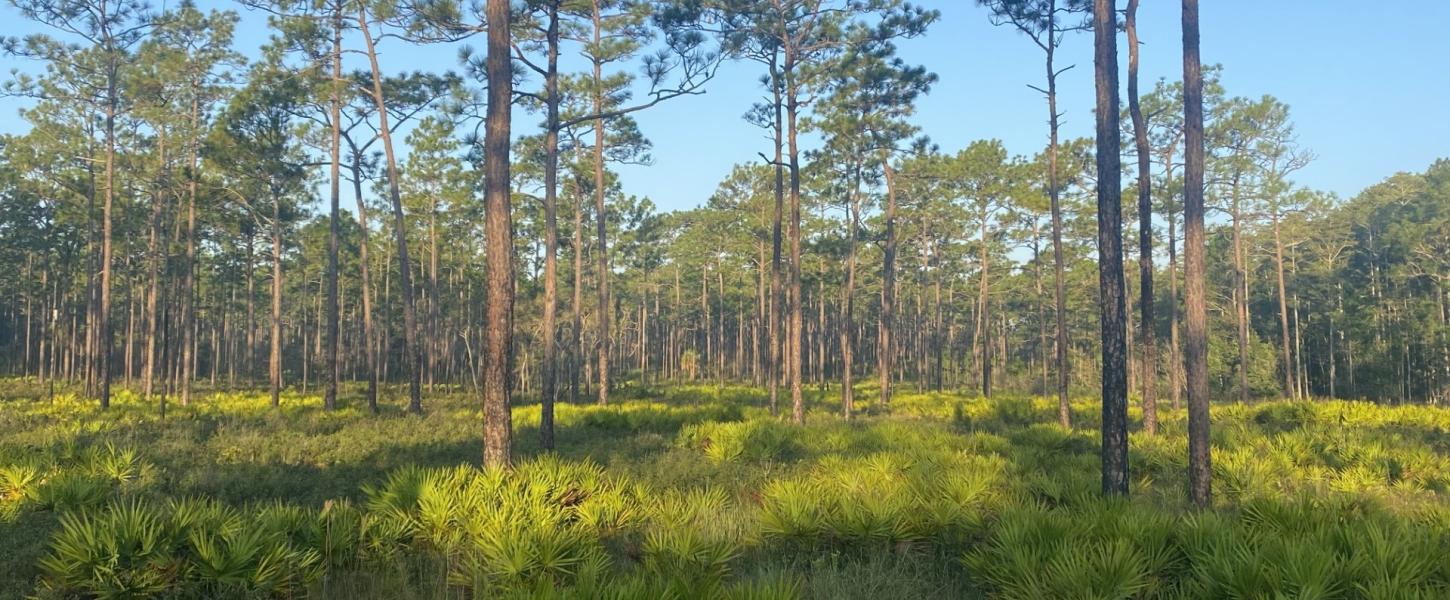Sandhill Restoration Project

Sandhill Restoration Project: Restoring a Natural Tapestry
Rainbow Springs State Park
Rainbow Springs State Park is embarking on an ambitious initiative to restore several areas of sandhill habitat within the park's boundaries. This project involves a careful and considered approach to rejuvenate these vital ecosystems.
By selectively removing certain tree species and implementing prescribed fire, we aim to recreate the conditions necessary for a thriving sandhill community. This restoration process will foster the return of native wildflowers, grasses, and other groundcover plants, ultimately creating a more diverse and resilient ecosystem.
The project's primary objectives are to:
• Reduce the risk of catastrophic wildfires
• Restore native plant communities
• Enhance wildlife habitat
• Protect the park's natural heritage
Through this restoration, we envision a landscape teeming with life, providing a haven for species such as gopher tortoises, fox squirrels, and a variety of birdlife.
Frequently Asked Questions:
What is the purpose of the project?
The primary goals of this project are to restore the sandhill ecosystem, reduce wildfire risk, and improve wildlife habitat within the park.
Where in the park will this occur?
Sandhill restoration activities will take place in multiple areas throughout the park, including the north side and near the campground/tubing area.
What type/species of tree are being removed and what type/species of tree are being replanted?
We will be removing a mix of sand pine, loblolly pine, and various hardwood species that are not native to the sandhill ecosystem. Native longleaf pines and groundcover plants like wiregrass will be reintroduced to restore the natural habitat.
How will this impact my experience as a visitor?
While there may be temporary disruptions during the active restoration phase, the long-term benefits will include a more visually appealing park and improved opportunities for wildlife viewing.
What happens after the harvesting/thinning?
After the initial harvest, the area will appear open and may contain woody debris. However, through prescribed fire, native plant/tree replanting, and ongoing management, the area will gradually transition into a healthy sandhill ecosystem.
Will prescribed fire be necessary?
Yes, prescribed fire is a crucial tool for maintaining the restored sandhill habitat. It will be used to control undergrowth, promote plant diversity, and mimic natural fire cycles.
Were any alternatives considered?
We carefully evaluated various management strategies and determined that restoration through timber harvest, prescribed fire, and replanting is the most effective and efficient approach to achieve our desired outcomes.
Will the revenue go back into the management of the park?
Any revenue generated from timber sales will be reinvested in park management and restoration projects.
Did the park consider all of the priorities of the park?
This project aligns with the park's mission to preserve and restore natural resources while providing opportunities for public enjoyment. The restoration of sandhill habitat will enhance both ecological and recreational values.
Did the park consider the immediate impact on the loss of wildlife habitat?
While there may be short-term impacts to wildlife, the long-term benefits of restoring the sandhill ecosystem will far outweigh any temporary disturbances. The restored habitat will provide a more suitable environment for a variety of native species, including those currently present.
Did the park consider that the existing habitat was more productive for both wildlife and recreation than sandhill?
The existing overgrown vegetation creates a less diverse and less productive habitat for wildlife. Restoring the sandhill ecosystem will enhance biodiversity and provide a more visually appealing environment for visitors.
How can the park be confident that future managers won't abandon the project?
The sandhill restoration project is outlined in the park's management plan, ensuring its long-term commitment. Additionally, the project aligns with broader state and regional conservation goals.
Did the park consider that such a controversial project may have been better suited to larger properties?
Rainbow Springs State Park plays a critical role in preserving sandhill habitat within its region. Given the decline of this ecosystem, restoring even a portion of it on park lands is essential for maintaining biodiversity and ecological balance.